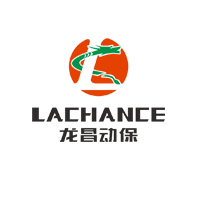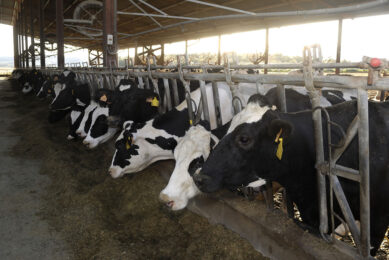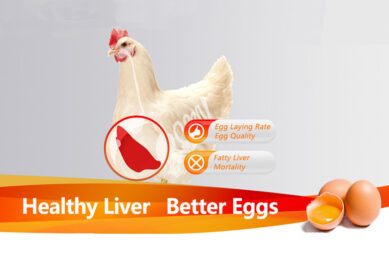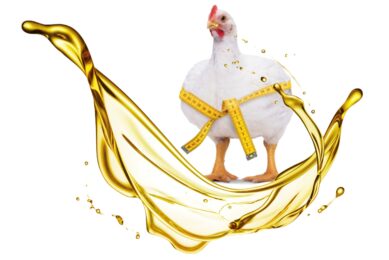Application of bile acids on trout

In recent years, as the demand for salmon has increased, the amount of salmon farming has accelerated, but feed and faecal contamination, susceptibility to bacteria and viruses, increased parasites, and pigmentation have become more serious.
Despite the late start of industrialised farming of salmon, with the increasing demand and investment in research and development, and production, China has gradually explored its own solutions in solving the above problems.
Salmon’s tolerance to fat
Normally, the fat content of salmon is 5-8%, but salmon is very tolerant to fat in feed. When the fat content of the feed is increased to 35%, the salmon can still tolerate this, which may be a reason why Salmon is referred to as ‘fat fish’.
There are 2 problems that need to be addressed:
- the reason why salmon is highly tolerant to fat and
- improve absorption rate of high-fat diet after feeding.
As an endogenous emulsifier, bile acids have the dual physical properties of hydrophilicity and lipophilicity as well as a special chemical structure in many cultured animals (broiler, laying hen, pig, grass carp, tilapia, penaeus vannamei.,etc). It plays an important role in improving the utilisation of fats and oils, protecting the liver and intestine health, and eliminating toxins. Recently, in order to verify the improvement of the growth performance of bile acids on salmon (and trout), the local trout feed manufacturer in Turkey conducted a 42-day scientific experiment.
Experimental trial set-up
1,500 trout with an average body weight of 180±5g were selected, and the trout was randomly divided into 5 treatments, which were control group, group 1, group 2, group 3 and group 4, with 300 fish in each group.
The control group was fed a basal diet, and group 1, group 2, group 3 and group 4 were supplemented with 300 mg/kg, 600 mg/kg, 1000 mg/kg, and 1200 mg/kg milk energy (30% bile acids). Different concentrations of bile acids can be mixed with 1% fish oil to prepare a commercial Salmonidae feed of 4mm in diameter, which is fed at a rate of 2% per day. After 42 days, the final weight, specific growth rate, FCR, and survival rate were measured.
Growth rate increase in trout
It can be seen from Table 1 that compared with the control group, the average final weight, survival rate and specific growth rate of group 1, group 2, group 3 and group 4 are significantly increased, and the survival rate can be increased by up to 10%; FCR is obviously decreased that ranged from 0.20 to 0.24. The final weight, survival rate and specific growth rate of group 3 were the highest, and the FCR of the group 4 was the lowest.
This experiment shows that adding 300~1200 mg/kg bile acids to the feed can improve the growth performance of trout. The experimental group had the highest end weight, survival rate, specific growth rate and the best growth performance with 1000 mg/kg bile acids, and could be as a recommended amount in the trout feed for a long time, thereby reducing the breeding cost and improving the benefit.
The important properties of bile acids
Bile acids can significantly improve the growth performance of salmon, which is related to its natural source and its physical and chemical properties:
- It is necessary to increase fat digestion and absorption rate by salmon due to its high fat tolerance. Bile acids naturally contain lipophilic groups and hydrophilic groups, therefore, as a natural emulsifier, bile acids not only increase lipase activity in the digestive tract, improve the digestion and absorption of intestinal fat, reduce protein addition, and increase body weight, but also promote fat-soluble vitamins like A, D, E and K, improve the immunity of cultured animals and improve growth performance. At the same time, bile acids can lower blood lipids, improve fatty liver and improve health status.
- Antibiotic abuse causes increasing tolerance of salmon bacteria, and the ruptured bacteria cause an increase in endotoxins (lipopolysaccharide). Bile acids can combine and eliminate endotoxins in the intestinal and internal environment, reduce endotoxemia and improve body health;
- Infectious anaemia raged through salmon and now is becoming a common disease, which caused Chile to suffer 60% reduction in production in 2008 with continuous effects for recent years. Infectious salmon anaemia is caused by Orthomyxoviuses, which contain intermediate membrane proteins and outer lipid membranes. Theoretically, bile acids can reduce the body damage caused by lipid-encapsulated viruses, thus to provide a prevention and treatment solution for infectious salmon anaemia.
- Salmon ‘yellow liver’ phenomenon. Chinese scholars believe that the ‘yellow liver’ phenomenon may be more related to the high sugar content rather than the high fat content in the feed. Bile acids regulate glucose metabolism in the body through FXR receptors. The feedback of bile acids-FXR-SHP pathway in the liver inhibits bile acids synthesis and gluconeogenesis.
- In the ileum where FXR is highly expressed, bile acids activate FXR to induce the production and secretion of fibroblast growth factor 19 (FGF19), which reaches the liver through the enterohepatic circulation. Potthoff et al. reported that FGF15/19 inhibited peroxisome proliferator-activated receptor γ coactivator 1α (PGC-1α) by dephosphorylation and inactivation of the transcription factor cAMP response element binding protein (CREB), thereby inhibiting hepatic glycogen synthesis.
- FXR induces the expression of small heterodimer partner (SHP), and thus inhibits the 2 nuclear receptors of liver receptor homolog 1 (LRH-1) and hepatic nuclear factor 4 (HNF-4), which inhibit the expression of CYP7A1 (a key enzyme for bile acids synthesis) to regulate the synthesis of bile acids.
- Yamagata et al. reported that an increase in bile acids concentration could inhibit the expression of related genes for gluconeogenesis through the FXR-SHP pathway, thereby inhibiting hepatic gluconeogenesis.
- Fabiani et al. reported for the first time that bile acids could inhibit the expression of PEPCK genes through the FXR-independent pathway, thereby inhibiting hepatic gluconeogenesis. All of the above indicate that bile acids can regulate hepatic gluconeogenesis and are beneficial for alleviating the “yellow liver” phenomenon of salmon.
- As a high-end fish, salmon feed usually needs additional astaxanthin to increase skin and flesh colours of salmon. Astaxanthin is a kind of carotenoid and also the highest level of synthesis from carotenoid. In nature, astaxanthin has the strongest antioxidant activity. Like other carotenoids, astaxanthin is a fat-soluble and water-soluble pigment, so bile acids can easily dissolve and absorb to improve its utilisation and improve immunity of salmon for more value.
Author: Wang Shengpeng






